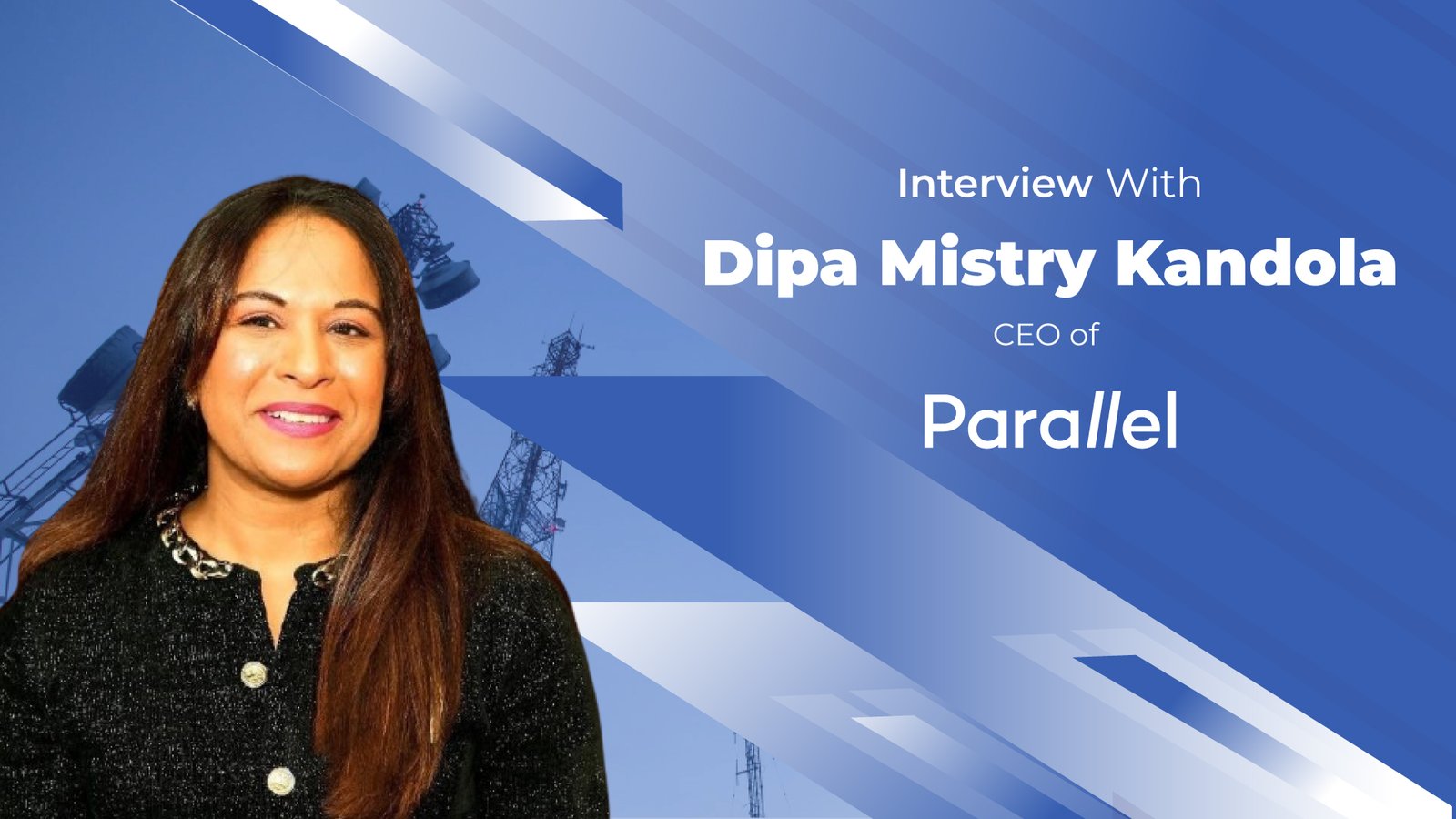Discover how Dipa is reshaping employee benefits for SMEs with accessible, people-first solutions that bridge the gap in workplace equity.
Welcome to Business Insights Journal, Dipa. To start off, can you please share a bit about your professional journey and what led you to focus on driving change in the employee benefits space?
Thank you, I’m delighted to be here.
My background spans more than two decades in the employee benefits landscape, both in B2B and B2C sectors, honing expertise in strategic development, proposition design, and operational delivery across HR, finance, SaaS, and employee benefits / workplace offering being the center of all of this. Before joining Parallel Employee Benefits, I was with Cloud8 as CEO scaling the business from 2020 inwards all the way until its acquisition by Benifex in October 2024.
What’s propelled me throughout this period to now, is a conviction that high-quality, intuitive employee benefits aren’t a luxury for big employers – they’re strategic essentials for companies of all sizes – the problem statement will be the same albeit resources / budget will hugely differ. Many smaller organisations still find themselves working with outdated systems, complex administration, and tools built with a one-size-fits-all enterprise mindset. I’ve seen how this can quietly limit HR teams’ productivity and, over time, affect employee engagement and retention. That’s why we’re absolutely committed to reshaping this space – building accessible, user-centric solutions that empower SMEs to offer benefits that matter, without prohibitive cost or unnecessary complexity.
Why do you think small and mid-sized enterprises (SMEs) are still priced out of truly meaningful employee benefits, and how is the broader industry complicit in maintaining this gap?
Despite record innovation and investment in technology over the last 20 years, too many SMEs remain priced out because the system simply wasn’t designed to serve them. Legacy infrastructure, inflated cost structures, and an ecosystem that prioritises scale over service create barriers that go beyond budget. HR leaders at smaller firms are promised modern, benefit platforms but are delivered clunky, inflexible systems. Switching costs are high, transparency is low, and innovation often stops the moment a contract is signed. SMEs account for over 99% of all UK businesses and employ more than 16 million people, yet access to these tools is often limited by said legacy infrastructure, inflated cost structures, and a benefits ecosystem that prioritises scale over service. Providers frequently hide behind market norms on pricing methods to justify outdated models, meeting the minimum requirements or perhaps trying to sell another underlying benefits product as part of the platform offering, thereby failing to create meaningful, fit-for-purpose benefits for the end user – the company and its people. This enterprise-first mindset is entrenched, and the industry has been slow to challenge it as the competition has set the standard / pricing, and they compete with each other in outdated ways.
According to the Gartner 2025 CHRO Budget Benchmarks report, HR functions typically operate with one HR full-time equivalent (FTE) per 58 employees. And with 69% of HR costs consumed by people-related spend, there’s often no budget left to invest in smarter, tech-enabled solutions.
When you talk about a “fair and accessible” benefits landscape, what does that look like in practical terms—especially for SMEs looking to compete for talent?
A fair benefits landscape is one where cost, complexity and prolonged set up times are no longer barriers to delivering great employee experiences. It’s 2025 we have so many Apps in our pocket – pensions and benefits should be as standard offered this way – 20 years on from when benefit platforms first emerged in the UK. It means offering no-cost technology to SMEs for the basics / essentials they have in place right now so their people engage with the investment the employer is making when it comes to benefits and pensions, and prioritising user experience, self-service tools. It’s about platforms that are intuitive, inclusive, and evolve with the business, just as employees expect from every other aspect of their lives. In practice, this means benefits that help SMEs compete for talent on equal footing with large corporates, without inflating overheads.
In your view, how have traditional benefit providers missed the mark when it comes to designing solutions for smaller businesses?
Traditional providers have tended to retrofit enterprise solutions for SMEs rather than designing from the ground up with their needs in mind. Many of them have legacy clunky systems which they are trying to rework for SMEs or perhaps the mindset from the 90’s of “How we used to do things so it’s okay”. The result is overly complex systems that demand significant admin time – time small HR teams simply don’t have. Instead of streamlining processes, these systems often add friction, leaving employees disengaged and HR leaders bogged down in manual work. Providers also focus heavily on ticking boxes of the latest trends they see in the benefits space, without investing in employee-centric design which needs to keep the message and user journey really simple.
What are some of the biggest misconceptions SMEs have when it comes to offering competitive employee benefits—and how can they overcome them?
One of the biggest misconceptions is that competitive benefits are inherently expensive or only viable for large organisations. In reality, new models and benefits options are dismantling that cost barrier by offering corporate-grade tools at no cost to SMEs. Another misconception is that known brand or following the latest benefit trend equals competitiveness the core docus for employees needs to be their people demographic needs and some trends we have seen like; since 2023, Economic pressures & cost of living – Inflation, interest rate uncertainty, and housing costs mean employees want benefits that can directly support day-to-day finances, not just long-term perks. So employees do want help toward grocery shopping and benefits that attract tax / NIC breaks like cycle and electric vehicles.
Post pandemic into 2022, what I would see as a Boomer generation focussed category now became and still is in the form of everyone’s mind – Wellbeing is now strategic, not optional, mental, physical, and financial wellbeing have become board-level priorities. Flexibility allows employees to choose what genuinely supports their wellbeing.
If anyone has read the 100-year life, we are seeing rapid life changes – The average UK employee now expects multiple career changes and more fluid personal circumstances. A benefits package that can be adapted without waiting 12 months is far more relevant, so day 1 access is key to engage people with the benefits / pension in the right way.
Overcoming these myths starts with seeking out providers who focus on long-term fit, simplicity, and ongoing support, rather than just a flashy launch.
You’ve spoken about challenging the status quo. Can you share a specific example of how a smaller firm has successfully driven people-first innovation in this space?
It’s clear the three key areas that buyers focus on is return on investment, a reduction in administration and an increase in engagement. This should be the focus for small businesses and firms using no-cost systems that centralise pensions, insurance, and employee data into a single, real-time dashboard, while giving employees app-based, self-service access to their benefits, goes a long way to helping with this.
What’s your personal strategy when it comes to staying ahead of industry trends and continuously advocating for more inclusive benefit models?
It’s about keeping a close eye on the intersection of technology, policy, and workforce expectations—particularly how they’re evolving for smaller employers. I actively engage with both disruptors in the HRTech space and the SMEs adopting their tools, so we can translate those innovations into practical solutions for our clients. Advocacy starts with evidence, so we lean on data, like the CHRO Budget Benchmarks, to highlight where SMEs are being underserved and where the industry must do better. So a few examples of economic trends were given above and how they impacted the benefits / tech landscape. In the last 5 years and more so now in 2025, is Generational diversity is at its peak – We now have five generations active in the UK workforce, each with different priorities, for example:
· Gen Z values mental health, sustainability, and skills growth – space from work and home
· Millennials focus on financial stability (e.g., housing, childcare).
· Gen X and Boomers often prioritise health, retirement planning, and dependants’ needs
A fixed package will inevitably alienate some groups. We need to make our selves aware of trends outside of the industry to see ripple impact on workplace.
What advice would you give to business leaders at smaller firms who feel stuck between budget constraints and the pressure to deliver great employee experiences?
Don’t assume you have to choose between affordability and quality. Seek out providers that understand the SME operating environment and are willing to offer core technology at no cost or low cost.
Prioritise platforms that reduce complexity, not add to it – and remember that the employee experience starts with accessibility.Even small improvements to benefits delivery and communication can have a big impact on engagement and retention. Some organisations like to run surveys and focus groups to learn what their employees want and need and use this intel as the foundation of what solutions and services are required.
In 2025, we see employers – National Insurance has increased, and private medical premiums for SMEs are up over 30% – making forward planning essential. To get the most from every pound, HR should streamline administration and target spend where it delivers the greatest impact.[DM3]
Finally, what’s one thought you’d like to leave our readers with as they rethink their approach to benefits and workplace equity?
If we’re serious about tackling talent inequality, productivity gaps, and the divide between large and small employers, we must give all businesses – regardless of size – the tools to care for their people with dignity and efficiency. The future of work will only be inclusive if access to quality benefits isn’t determined by budget size. Benefits must also be personalised and not generic, to suit the needs of each person.

Dipa Mistry Kandola
CEO of Parallel EB
Dipa has over 20 years of experience in the EB industry with skills in both B2B and B2C environments. Her experience includes strategic and proposition development, as well as the implementation and delivery of plans in HR, finance, SAAS, marketing, and insurance. She will use this experience to further the company’s strategic objective.

